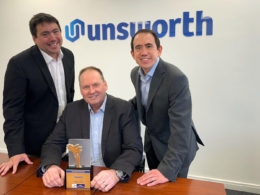In today’s ever increasingly mobile world, most of us do not go anywhere without our phones on us. Whether it’s socially or for work, many of us have developed a habit of taking our phones everywhere. Because of how tethered we have become to our phones, it is leading to other devices using the phone as its anchor to offer further functionality.
When it launches next year, the Apple Watch will have a symbiotic relationship with the user’s iPhone. Without being paired with a smartphone, the watch is all but a glorified pedometer. However, with the connectivity the iPhone offers, it opens up a whole raft of opportunities to develop applications that use the smartphone’s signal to develop services that are applicable to all kinds of wearable devices.
Earlier this year Google launched Glass, but it has struggled to find its market in the six months since it launched. A lot of companies and developers have looked at it and wondered what exactly it has been designed for. Without consistent connectivity, it thus far has limited functionality. What it misses is the connectivity needed to make it a viable option out in the field. In the future we will see devices like Glass adopt the same system as the Apple Watch in that the smartphone acts as the anchor and the device then offers bespoke services based on that central connectivity.
For businesses, this means employees do not always need to rely on their phone to access services and applications. For something like Google Glass, engineers could wear them and reference instructions displayed on the screen whilst keeping their hands working on the task. All the information of the job can be presented to them directly, and it can provide real-time pointers they can use to fix whatever they are working on faster.
Equally, with fingerprint technology already on the market, we will see applications whereby if an engineer is doing a job and needs to have it signed off by the customer, they can simply place their finger on the screen of the watch and approve it directly.
From a practical point of view, having to get your phone out every time you need something is not always that convenient. If you are in the middle of a job or dealing with a customer, it would be much easier, and provide a smoother experience, to glance at a watch or device like Google Glass rather than having to take out a phone, input a password and take your eye off what you are doing or keep the customer waiting longer than they needed to. Some of the wearable devices also provide silent alarms through vibrations, so if you know you need to be somewhere in the next hour, or if you have made the wrong turn, it can vibrate and gently remind you of something instantly.
Another potential application for these devices is helping to accurately record time spent on a job. If you start a task or journey, you can start the watch to time it, then tap it twice when it is done or you have arrived. That data can then be sent back to the office instantly where rotas are calculated to give the most accurate view on how employees are spending time, and help put together more efficient rotas and job tasks for employees.
None of this technology is currently available, but the concept of piggybacking off a central connected device suddenly makes wearable technology more realistic and applicable as information can be received and sent immediately.
Businesses will need to make a call about what works for their workforce as they will need to make an investment in the new hardware, along with maintaining the standard of smartphones they provide employees. However, this investment should start delivering results quickly as employees find their jobs easier, employers get more data about making their workforce more efficient, and customers benefit from a better overall experience.












